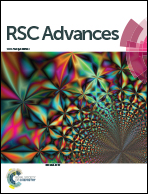Residue cytotoxicity of a hydrazone-linked polymer–drug conjugate: implication for acid-responsive micellar drug delivery†
Abstract
We report that the polymer residue of hydrazone-containing pH-responsive polymeric conjugate micelles could induce considerable cytotoxicity in a model cell line (HeLa). However, there was no significant difference between the cytotoxicity of the residue of the model drug (curcumin) and its parent form post hydrolysis. The results demonstrated that both the polymer residue and active drug could be beneficial for cancer treatment, whereas such a synergistic role of an amine-containing polymer residue was often neglected.


 Please wait while we load your content...
Please wait while we load your content...